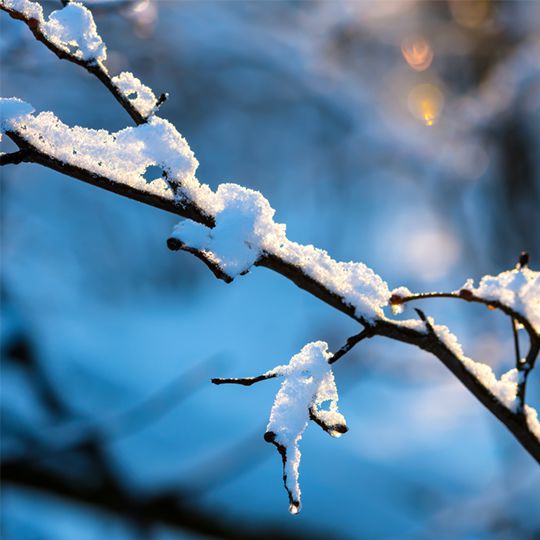Protecting Trees and Shrubs in Winter
Posted
January 21, 2016

During the colder months, snow, ice, sleet, wind, and even sun can damage landscaping, but there are ways of protecting trees and shrubs in winter, even in extreme conditions.
Be Wary of these Winter Woes
- Sunscald – Believe it or not, trees can still get damaged by the sun in the winter, sometimes from it simply reflecting off the snow. An unexpectedly warm and sunny winter day can sometimes bring trees out of their dormant stage, making them more susceptible to the cold when the temperatures drop again. Trees with thin bark are especially vulnerable.
- Snow and ice – While some plants thrive under the moisture provided by a light snow covering, most cannot handle heavy, wet snow or ice.
- Frost – Early frost can damage trees and shrubs, especially newer growths.
- Salt – While protecting us from slippery conditions, salt can be damaging to trees that are too close to the road, especially when they are constant recipients of salty spray from passing cars.
- Hungry animals – Deer, rabbits, and rodents sometimes gnaw on tree bark, leaves, and small branches when other food sources are scarce.
How to Protect Your Trees and Shrubs
- Since healthy foliage is less likely to be damaged by winter’s wrath, keeping your yard well-maintained during the growing season should be the first step in any protection plan. Keep watering new trees and shrubs throughout the fall until the ground freezes.
- When planting trees and shrubs in your yard, select plants that are best suited to your climate by being aware of their hardiness zones and proper growing conditions.
- Shrub protectors, tree wraps, and burlap netting create protective barriers from the wind and colder temperatures. Wrap tree trunks loosely with strips of burlap or other landscaping fabric, but make certain to remove these wrappings in the spring to allow the tree to grow naturally.
- Use chicken wire to create a protective shield around the plants or trees that deer, rabbits, and other creatures find tasty. Plastic tree guards work well on new trees as long as they go above the snow line. Remember to remove them in the spring.
- Don’t trim or prune trees and shrubs after the middle of summer. This tends to stimulate new growth and can postpone the dormant stage. Stop fertilizing plants several weeks before the first frost to prevent new growth as well.
- Don’t try to break ice off of tree limbs and shrubs as it can do even more harm to foliage. Try propping up or tying branches to prevent breakage instead.
- Mulching protects plants from the cold and extreme temperatures. Using 4 to 6 inches of mulch around a plant’s roots helps reduce fluctuating soil temperatures. Trees can benefit from mulching as well, but avoid placing the mulch directly on the trunks. Rodents and other creatures make nests in the mulch and are more likely to feed on bark when it’s easily in reach.
- Keep new trees or plants away from roads that get salted often in the winter. Choose plants that are tolerant of the salt or use burlap wraps to protect them until they are stronger.